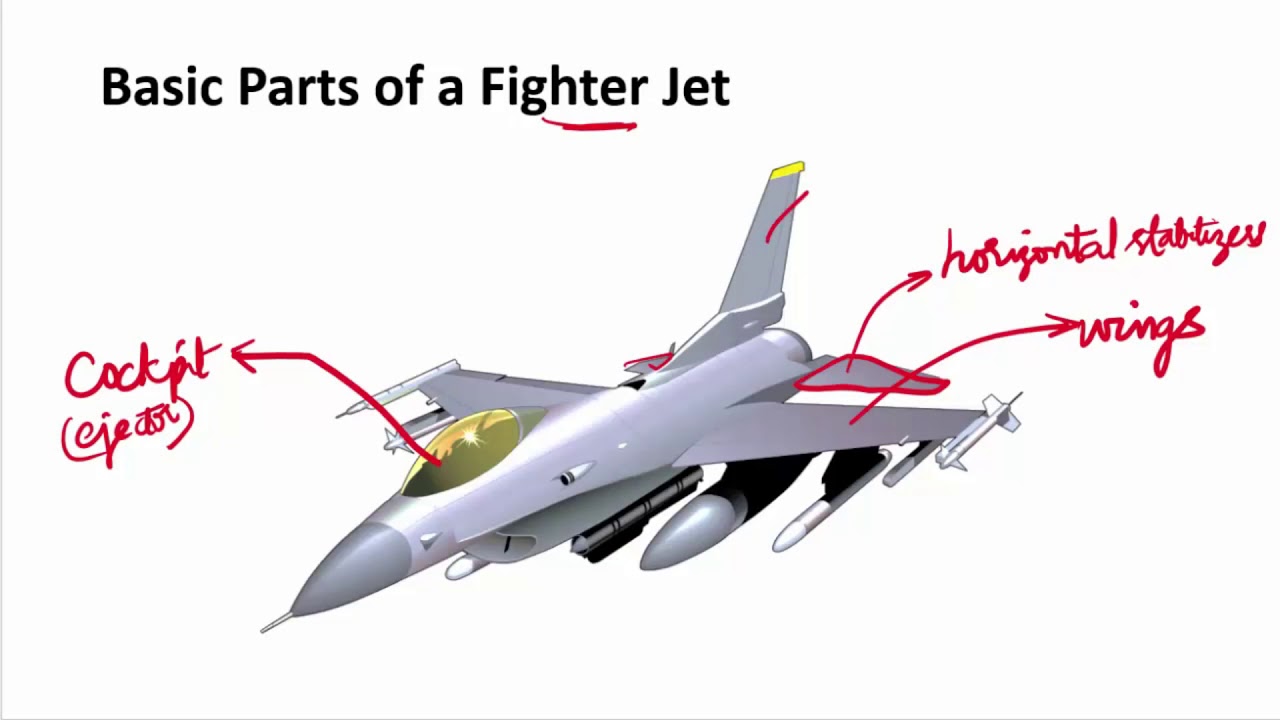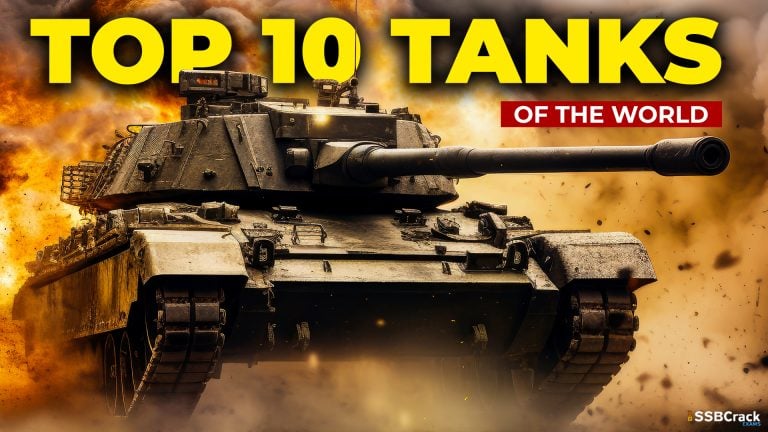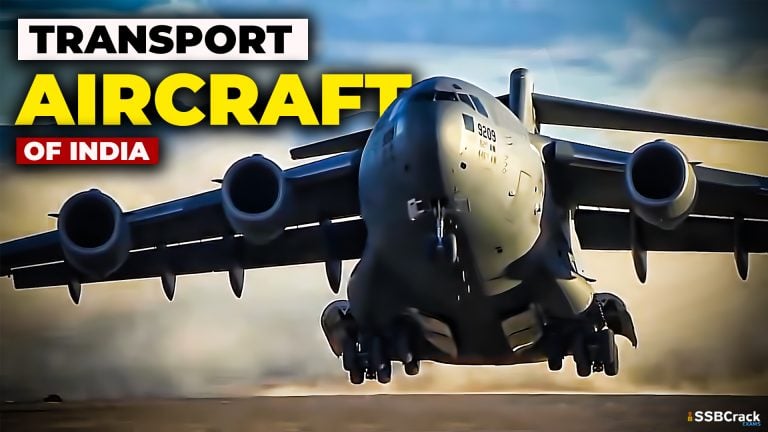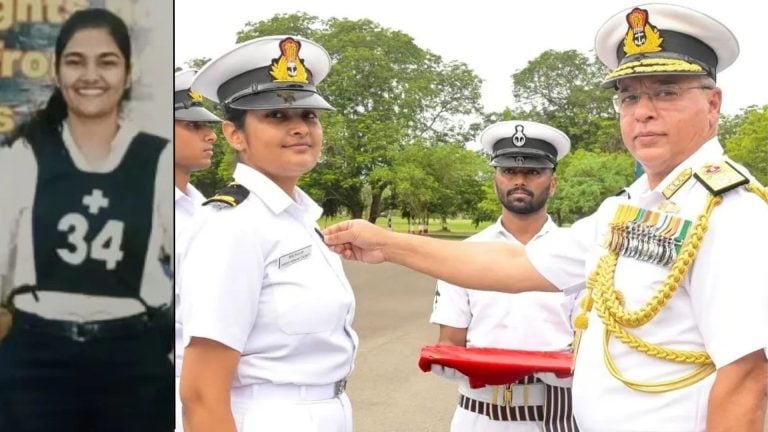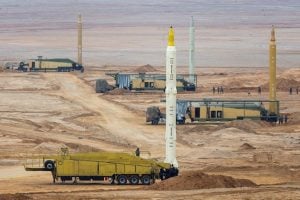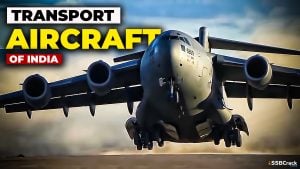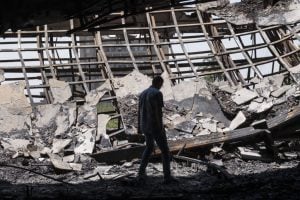The Indian Air Force is a powerful fighting force with well-known fighting skills. A number of fighter jets that are all ready for battle in any situation make the force stronger. Fighter jets are planes that are used to defend important airspace by shooting down enemy planes in battle. The enemy could be a group of fighters with similar abilities or a group of bombers with defensive weapons.
For fighters to be able to outfly and outmaneuver enemy planes, they must be able to perform at their best. The most important thing is that they have advanced weapons that can hit and destroy enemy planes. We are going to discuss How To Identify All Indian Fighter Aircraft?
SUKHOI SU-30 MKI
The Sukhoi Su-30 (NATO reporting name: Flanker-C) is a twin-engine, two-seat supermanoeuvrable fighter aircraft developed in the Soviet Union by Russia’s Sukhoi Aviation Corporation. It is a multirole fighter for all-weather, air-to-air and air-to-surface deep interdiction missions. The Su-30 started out as an internal development project in the Sukhoi Su-27 family by Sukhoi. The design plan was revamped, and the name was made official by the Russian Defense Ministry in 1996. Of the Flanker family, the Su-27, Su-30, Su-33, Su-34 and Su-35 have been ordered into limited or serial production by the Defense Ministry.
The Su-30 has two distinct version branches, manufactured by competing organisations: KnAAPO and the Irkut Corporation, both of which come under the Sukhoi group’s umbrella. The aircraft is tailor-made for Indian specifications and integrates Indian systems and avionics as well as French and Israeli sub-systems. It has abilities similar to the Sukhoi Su-35 with which it shares many features and components.
Also Read: Difference Between Su-30 And Su-30MKI Of Indian Air Force?


DASSAULT RAFALE
The Dassault Rafale (literally meaning “gust of wind”, and “burst of fire” in a more military sense) is a French twin-engine, canard delta wing, multirole fighter aircraft designed and built by Dassault Aviation. Equipped with a wide range of weapons, the Rafale is intended to perform air supremacy, interdiction, aerial reconnaissance, ground support, in-depth strike, anti-ship strike and nuclear deterrence missions. The Rafale is referred to as an “omnirole” aircraft by Dassault. The Rafale was one of the six aircraft competing in the Indian MRCA competition for 126 multirole fighters. Originally, the Mirage 2000 had been considered for the competition, but Dassault withdrew it in favour of the Rafale.
In March 2019, Indian government officials asked for Rafales to replace ageing MiG-21s and to counter Pakistan’s newer F-16s. Ahead of the first Rafale’s formal hand over on 8 October 2019, The Indian Air Force Day 2019, the IAF accepted the aircraft at Dassault’s Bordeaux manufacturing facility in an event attended by Defence minister Rajnath Singh and his French counterpart; it had tail number “RB-001” to mark IAF chief-designate Air Marshal RKS Bhadauria’s role in the 2016 deal. In 2018, it was reported that the Rafale is competing against several other aircraft in a new procurement tender for 114 multi-role combat aircraft, which is referred as MMRCA 2.0 in the Indian media.
Also Read: Everything You Need To Know About Rafale Fighter Jet


MIKOYAN GUREVICH MIG 29
The Mikoyan MiG-29 (NATO reporting name: Fulcrum) is a twin-engine jet fighter aircraft designed in the Soviet Union. Developed by the Mikoyan design bureau as an air superiority fighter during the 1970s, the MiG-29, along with the larger Sukhoi Su-27, was developed to counter new U.S. fighters such as the McDonnell Douglas F-15 Eagle and the General Dynamics F-16 Fighting Falcon. The MiG-29 entered service with the Soviet Air Forces in 1982. India was the first international customer of the MiG-29.
The Indian Air Force (IAF) placed an order for more than 66 MiG-29s in 1980 while the aircraft was still in its initial development phase. Since its induction into the IAF in 1985, the aircraft has undergone a series of modifications with the addition of new avionics, sub-systems, turbofan engines and radars. Indian MiG-29s were used extensively during the 1999 Kargil War in Kashmir by the Indian Air Force to provide fighter escort for Mirage 2000s attacking targets with laser-guided bombs.


DASSAULT MIRAGE 2000
The Dassault Mirage 2000 is a French multirole, single-engine fourth-generation jet fighter manufactured by Dassault Aviation. It was designed in the late 1970s as a lightweight fighter to replace the Mirage III for the French Air Force. The Mirage 2000 evolved into a multirole aircraft with several variants developed, with sales to a number of nations. It was later developed into the Mirage 2000N and 2000D strike variants, the improved Mirage 2000-5 and several export variants. Over 600 aircraft were built, and it has been in service with nine nations.
With the delivery of the first seven aircraft on 29 June 1985 to No. 7 Squadron, the Battleaxes, the Indian Air Force (IAF) became the first foreign user of the type, which they renamed the “Vajra” (Sanskrit: वज्र, for Lightning, Thunderbolt). During the 2001–02 India–Pakistan standoff, Mirage 2000 were used to destroy Pakistani bunkers with precision guided bombs. According to the Indian government, at approximately 0300 IST on 26 February 2019, twelve non-upgraded Mirage 2000 aircraft were used to strike a Jaish-e-Mohammed training camp in Balakot, Pakistan. This engagement was the first time since the 1971 war that Indian fighter jets had entered Pakistani airspace. All aircraft were armed with one Israeli Spice 2000 (one-tonne) bomb.


HAL LCA TEJAS
The HAL Tejas is an Indian single-engine, fourth-generation, multirole light fighter designed by the Aeronautical Development Agency (ADA) and Hindustan Aeronautics Limited (HAL) for the Indian Air Force and Indian Navy. It came from the Light Combat Aircraft (LCA) programme, which began in the 1980s to replace India’s ageing MiG-21 fighters. In 2003, the LCA was officially named “Tejas”. The Tejas is the second supersonic fighter developed by Hindustan Aeronautics Limited (HAL) after the HAL HF-24 Marut. As of 2016, the Tejas Mark 1 was in production for the Indian Air Force (IAF) and the naval version was undergoing flight tests for Indian Navy (IN). As of 2019, the Indian Air Force has planned for a total of 324 Tejas in several variants.
The first batch of 40 Mark 1 aircraft consists of 16 Initial Operational Clearance (IOC) standard that were delivered in early 2019. The delivery of the second batch of 16 Full Operational Clearance (FOC) standard aircraft commenced in late 2019 and led to formation of the second Tejas squadron — No. 18 Squadron IAF Flying Bullets — in Sulur on 27 May 2020. The IAF will also go on to receive eight twin-seat trainers. The next 83 are to be to the upgraded Mark 1A standard. By the time these first 123 are delivered, the Tejas Mark 2 is expected to be ready for series production by 2025–26.
Also Read: Everything You Need To Know About LCA Tejas


SEPECAT JAGUAR
The SEPECAT Jaguar is a Anglo-French jet attack aircraft originally used by the British Royal Air Force and the French Air Force in the close air support and nuclear strike role. It is still in service in upgraded form with the Indian Air Force. Originally conceived in the 1960s as a jet trainer with a light ground attack capability, the requirement for the aircraft soon changed to include supersonic performance, reconnaissance, and tactical nuclear strike roles.
Indian Jaguars were used to carry out reconnaissance missions in support of the Indian Peace Keeping Force in Sri Lanka between 1987 and 1990. They later played an active role in the 1999 Kargil War with Pakistan, dropping both unguided and laser-guided bombs, the IAF defining its role as a “deep penetrating strike aircraft”.


MIKOYAN GUREVICH MIG 21
The Mikoyan-Gurevich MiG-21 (NATO reporting name: Fishbed) is a supersonic jet fighter and interceptor aircraft, designed by the Mikoyan-Gurevich Design Bureau in the Soviet Union. Its nicknames include: Balalaika because its planform resembles the stringed musical instrument of the same name.
Approximately 60 countries over four continents have flown the MiG-21, and it still serves many nations six decades after its maiden flight. It made aviation records, became the most-produced supersonic jet aircraft in aviation history, the most-produced combat aircraft since the Korean War and previously the longest production run of a combat aircraft.
Also Read: Why MiG-21s Are Called Flying Coffins And Why IAF Still Uses Them?


To join the Indian Airforce as an Officer and crack the SSB Interview, You can join our SSB interview live classes batch and we recommend you to Enroll SSB INTERVIEW ONLINE COURSE. Trusted by thousands of defence aspirants.
Also Read:
- All You Need To Know About Indian Air Force Fighter Aircraft
- All Aircrafts Of Indian Air Force [UPDATED LIST]
- Difference Between Su-30 And Su-30MKI Of Indian Air Force?
- Difference Between IAF Rafale VS IAF Sukhoi 30
- Top 5 Fastest Fighter Jets In The World
- Top 5 Fighter Jets Of Indian Air Force
- Indian Air Force Ranks And Insignia [MUST WATCH]


